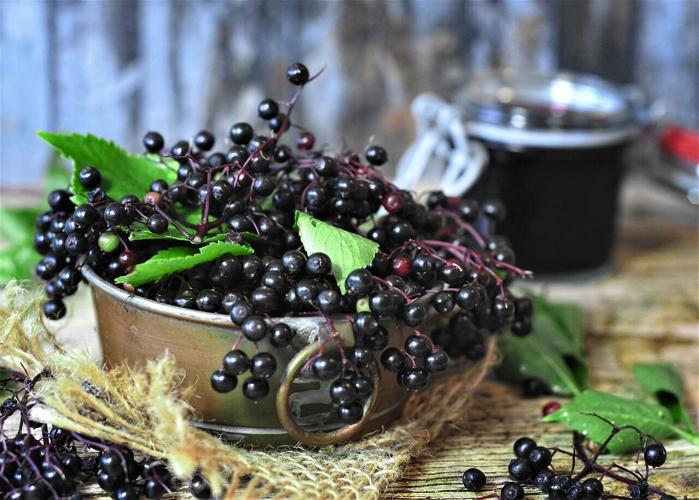In 2013, the International Herb Association selected the elderberry as its ňňň˝ĘÓƵśHerb of the Year.ňňň˝ĘÓƵť Elderberry (genus Sambuca) can be found in nature across most of the globe and has been used by humans since prehistoric times for a variety of medical and other purposes, according to archaeological evidence.
The thousands of years of elderberryňňň˝ĘÓƵ™s close association with human activities have created a rich folklore and a number of superstitions about the plant. Throughout the ages people have believed the plant to have great supernatural power and meaning. They have associated it with both positive and negative forces. In some areas still today, people ask permission of the elderberry plant before they make use of it.
The name Sambucus is derived from the ancient Greek word sambuke, a type of musical pipe. This name is because the plantňňň˝ĘÓƵ™s pithy stems can be hollowed out easily.
The genus Sambucus contains about 20 to 30 different species, all with similar characteristics. They are generally deciduous, hardy, multi-stemmed shrubs or small trees that spread prolifically through rhizomes and seeds.
They produce large, flat clusters of white to pink flowers in spring that give way to berries at the end of summer. The berries can be black, blue, red, white, or yellow, depending on the cultivar.
Leaf color includes a variety of greens with some species having purple or almost black leaves. Some varieties have autumn leaf color. The leaves of Sambucus are generally described as having an unpleasant smell, but the flowers are often pleasingly fragrant. The stems, leaves, and roots are toxic, though the berries and flowers can be consumed safely if properly prepared.
Sambucus is widely naturalized. Its cold hardiness and tolerance of a wide variety of soils makes it suitable for cultivation in most of the country. It thrives in areas with cold winters and relatively warm summers.
It is cold hardy to -20 degrees Fahrenheit, but growth and production are damaged at temperatures above 90 degrees Fahrenheit. It grows in sun or part shade and prefers a moist, rich, well-drained soil that is slightly acidic.
In Texas, intense heat and frequent drought mean gardeners usually have to provide afternoon shade and supplemental water. Sambucus are cross-pollinated and require two or more plants within fifty feet of each other for successful fruiting. They are vigorous growers, spreading from suckers, and can quickly form dense clumps if not contained.
Elderberry has been used in herbal medicine as a panacea to treat a variety of complaints from fever to digestive issues to coughs. Its flowers and berries have been made into salves and ointments to treat chapping and other skin irritations and burns.
As a food component, elderberry is used in cordials, teas, and alcoholic concoctions, including wine, as well as in jams and jellies. Elder flowers and berries sometimes provide undernotes of other fruits or flavors, like cherry or licorice and are used to enhance other dishes.
Native Americans and early Europeans made inks and dyes from the plantňňň˝ĘÓƵ™s stems, roots and berries. As an ornamental landscape plant, elderberry is useful as a colorful understory tree, in clumps as windbreaks, and as cover for birds.
Gardeners have grown elderberries mostly for their flowers and berries, relying in this country on two main species, the European elder (Sambucus nigra) and the American elder (Sambucus canadensis) and their many cultivated varieties.
Extension experts at recommend the following varieties for Texas: Adams, Black Beauty, Black Lace, Blue, European Red, Lemon Lace, and York, depending on the gardener’s needs. Plantings of elderberries can be seen at the Lady Bird Johnson Wildflower Center and the Fredericksburg Nature Center.





Commented